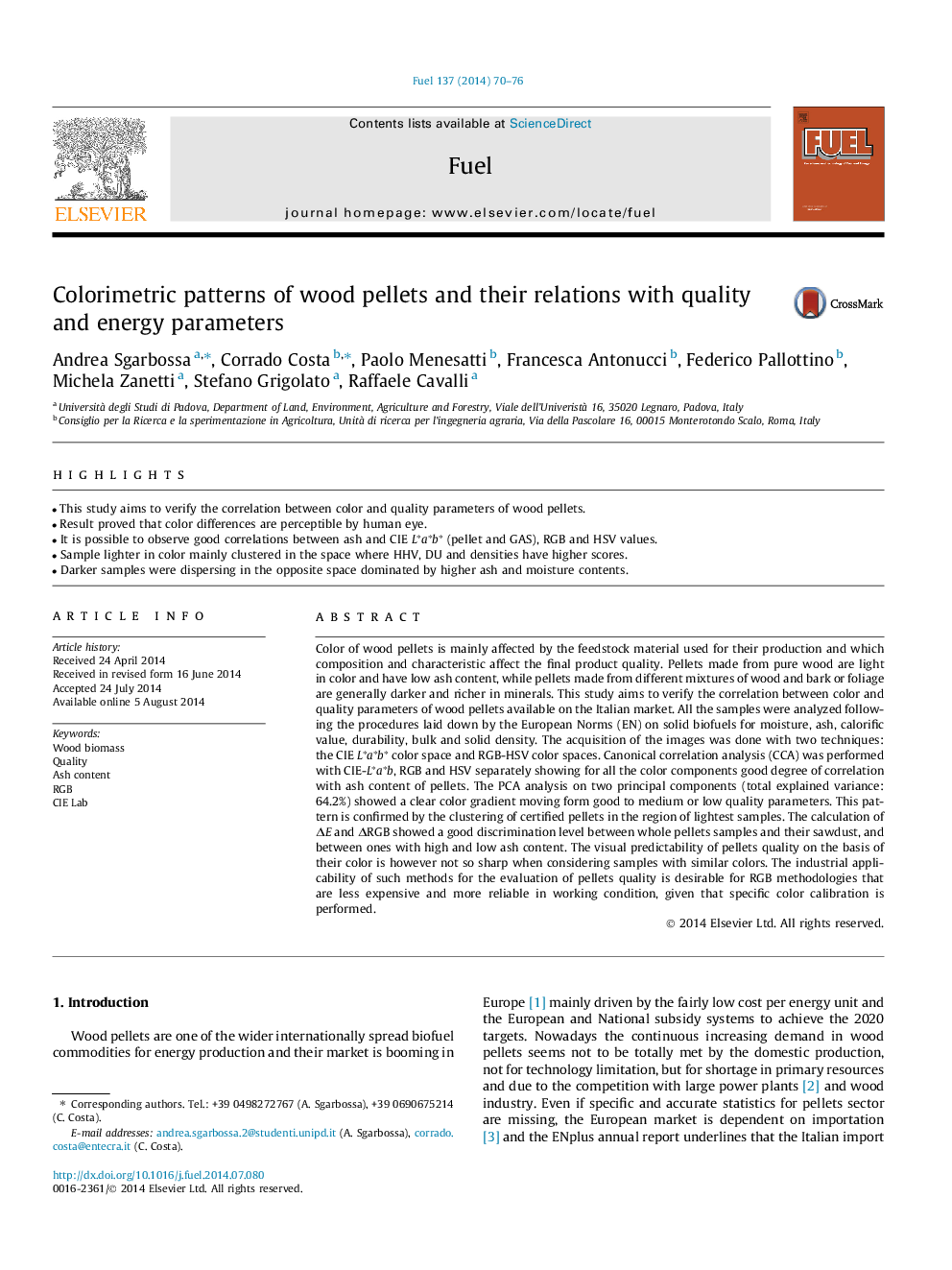| Article ID | Journal | Published Year | Pages | File Type |
|---|---|---|---|---|
| 206025 | Fuel | 2014 | 7 Pages |
•This study aims to verify the correlation between color and quality parameters of wood pellets.•Result proved that color differences are perceptible by human eye.•It is possible to observe good correlations between ash and CIE L∗a∗b∗ (pellet and GAS), RGB and HSV values.•Sample lighter in color mainly clustered in the space where HHV, DU and densities have higher scores.•Darker samples were dispersing in the opposite space dominated by higher ash and moisture contents.
Color of wood pellets is mainly affected by the feedstock material used for their production and which composition and characteristic affect the final product quality. Pellets made from pure wood are light in color and have low ash content, while pellets made from different mixtures of wood and bark or foliage are generally darker and richer in minerals. This study aims to verify the correlation between color and quality parameters of wood pellets available on the Italian market. All the samples were analyzed following the procedures laid down by the European Norms (EN) on solid biofuels for moisture, ash, calorific value, durability, bulk and solid density. The acquisition of the images was done with two techniques: the CIE L∗a∗b∗ color space and RGB-HSV color spaces. Canonical correlation analysis (CCA) was performed with CIE-L∗a∗b, RGB and HSV separately showing for all the color components good degree of correlation with ash content of pellets. The PCA analysis on two principal components (total explained variance: 64.2%) showed a clear color gradient moving form good to medium or low quality parameters. This pattern is confirmed by the clustering of certified pellets in the region of lightest samples. The calculation of ΔE and ΔRGB showed a good discrimination level between whole pellets samples and their sawdust, and between ones with high and low ash content. The visual predictability of pellets quality on the basis of their color is however not so sharp when considering samples with similar colors. The industrial applicability of such methods for the evaluation of pellets quality is desirable for RGB methodologies that are less expensive and more reliable in working condition, given that specific color calibration is performed.
